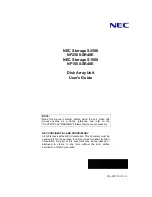
HT67F86A Internal RTC Application Guidelines
AN0448E V1.00
5/7
January 16, 2017
Negative Impedance
The LXT oscillator provides a negative impedance reference and for safety provides a value
which is at least 3 times that of the ESR to avoid oscillation problems in mass production.
Special attention should be made with regard to this when using the 32768Hz crystal.
Oscillation Frequency
The LXT oscillator oscillation frequency is mainly determined by the 32768Hz crystal
capacitance C
L.
For example, if the external capacitors C1 and C2 series equivalent
capacitance values together with the PCB parasitic capacitance is equal to the crystal
capacitance C
L
, then an accurate frequency of 32768Hz can be achieved. The user can
adjust the oscillation frequency to determine the appropriate C1 and C2 capacitance. It
should be noted that the oscillation frequency will be lower if the chosen C1 and C2
capacitors are greater than C
L
and vice versa. The crystal related characteristics and the
oscillation frequency curve used by the MCU should be taken into account for temperature
deviation. Note that checking the oscillation frequency by directly using an oscilloscope
probe is inadvisable. The best way to check the frequency is using the I/O pins.
Standby Power Consumption
When the LXT is in an oscillating state together and the Time Base clock circuit turned on to
reduce power, it can provides a low MCU standby power consumption of lower than 1µA at
an operating voltage of 3V, thus achieve longer service life for battery-powered products.
This means that the HT67F86A forms an excellent choice for power sensitive applications.
As well as considerations regarding the frequency characteristics, the user should also pay
attention to the standby power consumption when selecting the crystal CL and external C1
and C2 capacitors. The common CL capacitance is 12.5pF. When measuring the standby
current not that scope probes should not be placed on any MCU pins.
Symbol
Standby Mode
Test Condition
Min.
Typ.
Max.
Unit
V
DD
Condition
I
STB
SLEEP Mode
3V
WDT off, Time Base on
— 0.6 1.0
µA
5V —
0.8
1.5
3V
WDT on
— 0.7 1.5
µA
5V —
0.9
3.0
IDLE0 Mode
3V
f
SUB
on
— 1.0 3.0
µA
5V —
1.5
5.0
PCB Planning Considerations
During circuit design, designers should select an appropriate feedback resistor R
P
, with a
resistance range of between 5M
Ω
and 10M
Ω
, and capacitors C1 and C2 for a matched
oscillation frequency after the frequency test. Any high frequency circuits located close to
the LXT circuit, will influence the oscillator characteristics, therefore special care must be
taken in such cases. The LXT oscillator circuit should be located as close to the XT1/XT2
pins as possible while the interconnecting lines between the C1/C2 capacitors and VSS
should be as short as possible. The reference circuit is shown below.

























